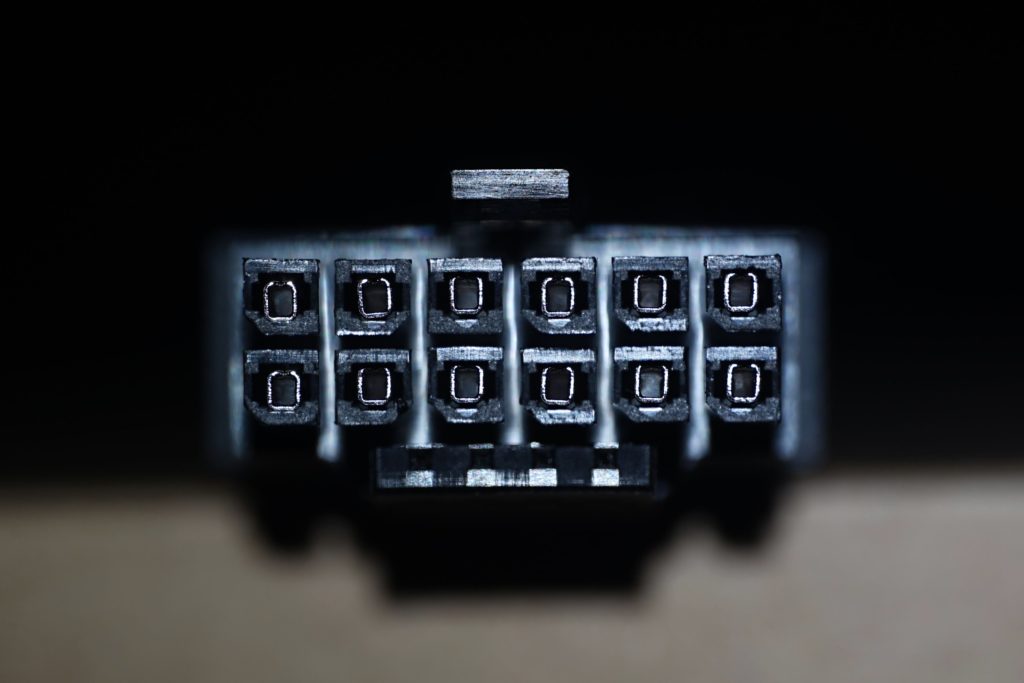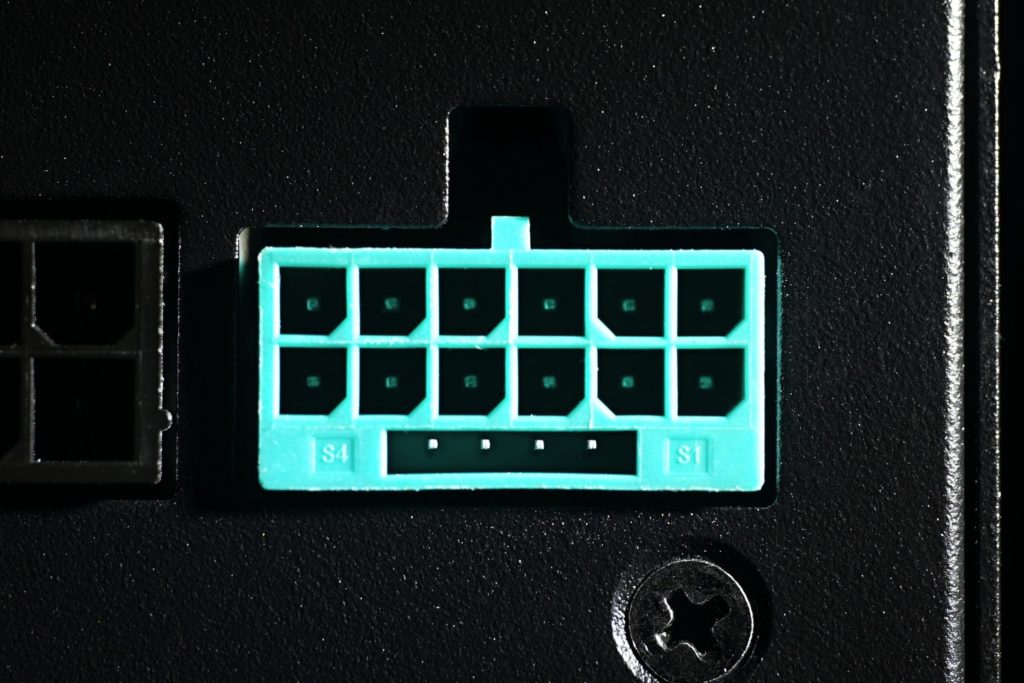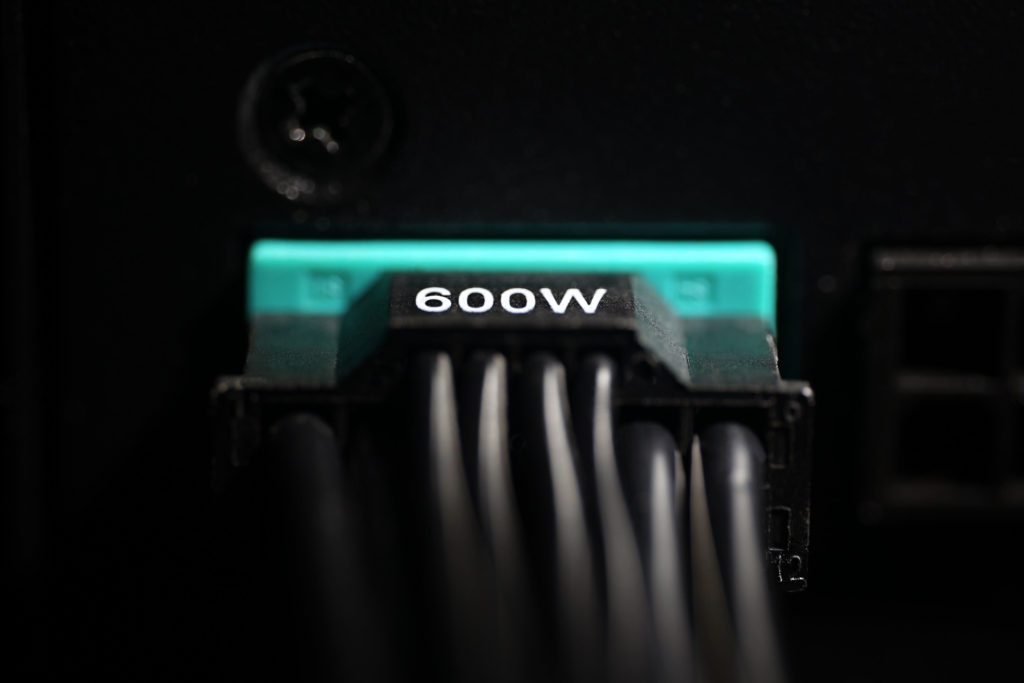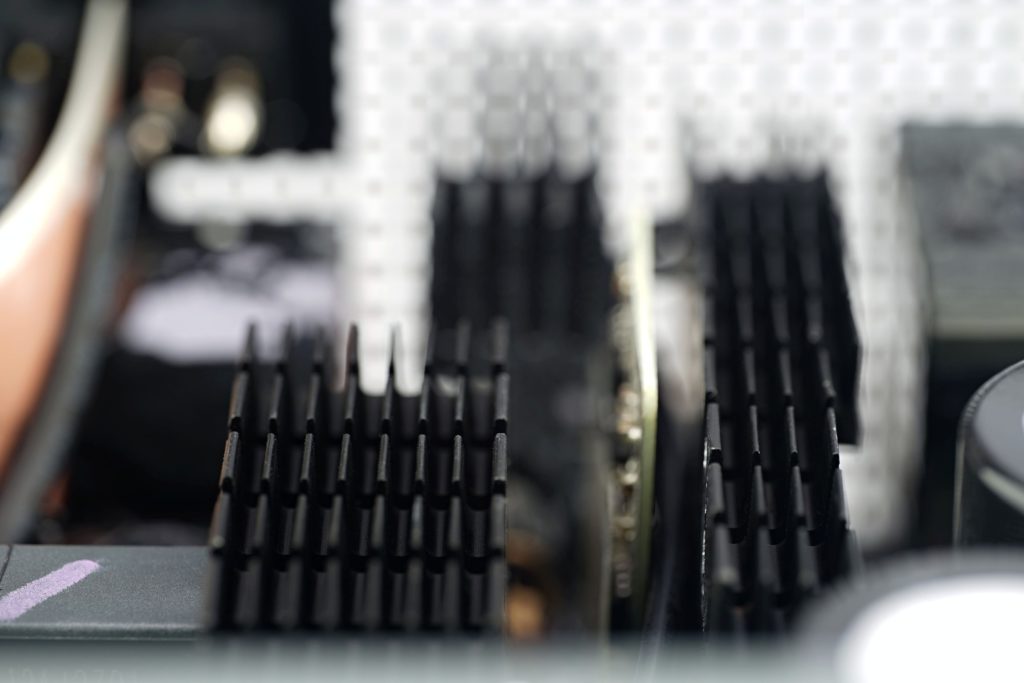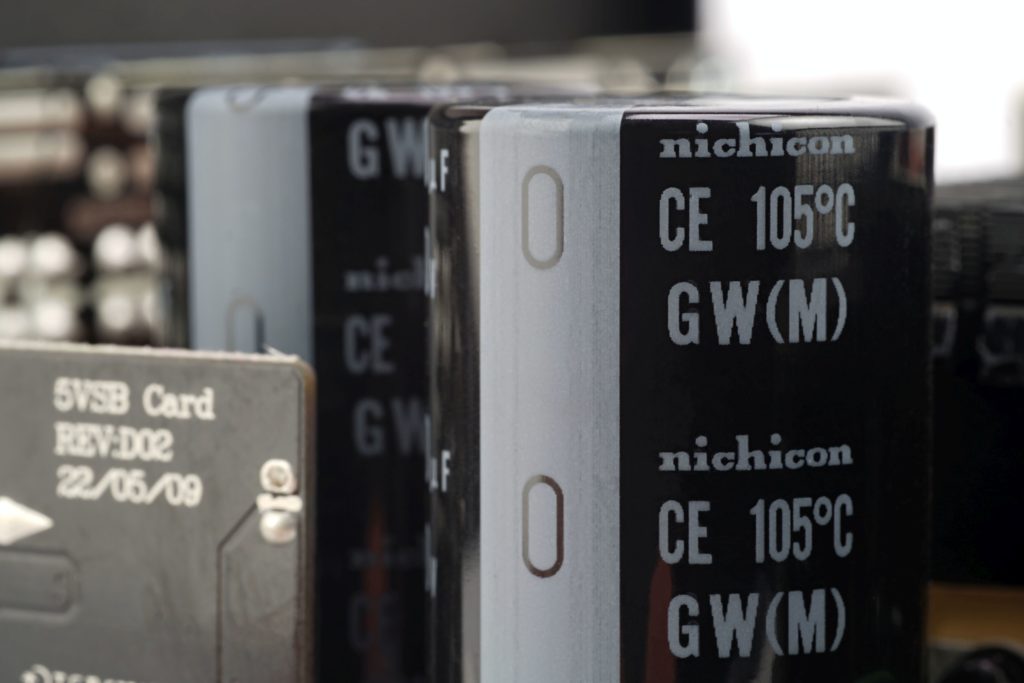DeepCool PX1000G PSU (1000 W)
We’re continuing to gather resources into, let’s say, a larger comparative test. DeepCool has the PX series for the new ATX 3.0 standard. Its 1000W seems like an attractive option for computer builds with a very powerful graphics card and CPU in a combined load. In such a situation, the PX1000G power supply should perform in the most efficient spectrum. The price? 180 EUR.
From the outside…
In terms of the PX-G model range, the 1000-watt variant next to the 850 W and 1200 W represents a sort of middle ground. Its optimal efficiency range (between 50–60%) corresponds roughly to the gaming load of high-end GeForce RTX 4090 or Radeon RX 7900 XTX graphics cards with powerful Intel Core i9 or Ryzen 9-class processors. Or high combined workloads of weaker components, typically for computing tasks. The constant current load of the 12-volt branch is up to 83.3 A.
Due to the relatively lower price per watt, the efficiency is equivalent to ETA Gold (80 Plus equivalent). The noise class certification is Lambda A, which is the third lowest – the quietest – of Cybenetics’ seven levels. The area of the grille in front of the fan is open to an above-standard degree and the shape of the cut-outs is in the form of squares. Tonal peaks may or may not be created by airflow on their edges, but this will only be shown in tests.
Like every ATX 3.0 standard power supply, this one has its own 12VHPWR connector, which is used by Nvidia graphics cards. It is designed for a 600W load and is one of the “better” ones that will heat up less.
Aside from the large cross-section of AWG 16 wires, which is fairly common, it also has NTK hollows. These have (compared to the Astron ones) a larger contact area with the pins, the transition resistance in critical areas is lower, which results in lower temperatures. This is not to suggest that Astron pin designs are unfit for 600W, they too are sufficiently over-dimensioned, but with DeepCool they have pushed this aspect even further.
The plastic housing of the 16-pin connector is highlighted with the company’s turquoise color. It takes relatively more force to fully push the connector in because of the tighter hollows, but with a straight, perpendicular insertion, everything can be managed without regular exercise. After correct insertion, the sound of the latch clicking is clearly audible. Then you can be sure that everything is in order.
On the rear panel, in addition to the mains switch, there is also a button for selectable fan mode. When hybrid mode is enabled, operation from up a certain load downwards is passive (where exactly is the breakpoint from which the fan switches off, we measure) or you can select a position where the fan is always active, even at very low loads.
… and from the inside
The power supply has a higher weight (1848 g), so there is no shortage of internal components.
A larger, 135-millimetre fan is used for cooling. Still, at 160mm in length, it’s still a short power supply with good compatibility with PC cases.
The aluminium heatsinks on the voltage regulators of the converters are robust and articulated, well finned.
The capacitors are completely from Nichicon – 105-degree models – so on paper decent. In the primary part there are two large, 420-volt ones with a capacitance of 470 µF. We won’t figure out the electrical quantities in practice now, they will be a matter of measurements to be made at the end of the year.
| Brand and model of the PSU | Basic parameters from the manufacturer | Price [eur] | ||||||||||
| Power output [W] | Continuous current load [A] | 80 Plus | Connectors | AWG | ||||||||
| +12 V | +5 V | +3.3 V | 16-pin * | 6+2-pin * | 8/4+4-pin | SATA | 4-pin Molex | |||||
| DeepCool PX1000G | 1000 | 83.3 | 22.0 | 22.0 | Gold | 1+0× | 3+0× | 2× | 7× | 4× | 18–16 | 180 |
| MSI MPG A850G | 850 | 70.8 | 22.0 | 22.0 | Gold | 1+0× | 4+2× | 2× | 7× | 4× | 18–16 | 169 |
* We report the number of PCI Express connectors as the sum of native and shared ones (the second number after the “+” sign). Native connectors are those that are the same on both sides. Shared ones are then connected via different connectors on the power supply side, for example, a single 300-watt 16-pin (12VHPWR) is formed by using two 6+2-pin connectors, and vice versa – a 16-pin connector can be used to connect a cable with two 6+2-pin connectors.
English translation and edit by Jozef Dudáš
- Contents
- DeepCool PX1000G PSU (1000 W)









